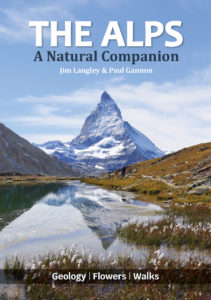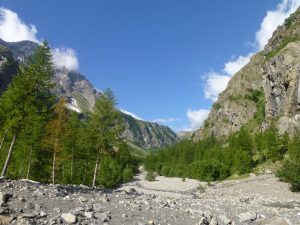National parks in the European Alps. national Parks are treasured as a national asset in many countries. Jim Langley looks at protected areas in the central Alps.
They offer protection for ecosystems and landscapes whilst allowing access and education for visitors and scientists. The level of protection that these parks offer varies from country to country and the administrative frameworks for these protected areas are equally diverse.
A bit of history
In Europe’s early history protected areas were valued for either their game or as a resource for timber. It wasn’t until the 16th century that the natural beauty of an area began to take precedence. This continued through into the 19th century with the development of the European Romantic movement and civil society organisations whose express purpose was to protect these areas of natural beauty. During the 20th century the state re-emerged as a leader in the creation of publicly funded protected spaces across Europe.
The concept of protecting an area as a ‘national park’ was established in North America and their popularity led many European countries to experiment with the idea. Sweden became the first European country to establish national parks in 1909 and Switzerland created the first alpine national park in 1914. As the trend for creating protected areas in Europe became established the organisation of these into either national parks and nature reserves also developed. Like national parks, nature reserves offer protection but were singled out for the quality of its flora and fauna whereas a national park was considered its natural beauty to be equally important.
Modern perceptions of protected areas
Until the 1970’s national parks were considered independent from their surrounding landscape. Societal benefits were considered incompatible with the parks objectives and any considerations of social or economic benefits were viewed largely as compromising nature conservation and landscape protection objectives. During the past 40 years planners of protected areas began to acknowledge the importance of local communities and to recognise modern approaches to governance away from traditional government-run national parks. Stewardship and management of protected areas began to integrate local communities often in partnerships with social scientists and non-governmental organisations.
This approach to conservation planning continues to shape management and policy decisions today. National parks, occupying large areas of wilderness, are viewed as critical components of a life support system. Along with protecting biodiversity and providing habitats for species they are seen to offer environmental resilience and protection. They are seen to enable us to adapt to climate change through storing and sequestering carbon, to provide ‘ecosystem services’ such as clean water, food provision and temperature regulation. The national parks in the central European Alps are summarised in Table 1. This table highlights the different levels of management and status provided in the various countries. What can also be observed is that some national parks have management zoning and additional international designations which exist in these protected areas.
 You can expand on this article by reading my book the alps a natural companion
You can expand on this article by reading my book the alps a natural companion
Table 1 National Parks in the central European Alps
| Country | National Park | IUCN category | Year designated | International designations | |
| Core area Buffer zone | |||||
| Germany | Berchtesgaden | II | 1978 | Biosphere reserve | |
| Switzerland | Swiss National Park | Ia | 1914 | Biosphere reserve | |
| Slovenia | Triglav | II | V | 1981 | Biosphere reserve |
| Italy | Val Grande | II | 1991 | Geopark | |
| Stilfserjoch / Stelvio | II | 1935 | |||
| Gran Paradiso | II | 1922 | |||
| Dolomiti Bellunesi | II | 1988 | World Heritage Site | ||
| France | Ecrins | II | V | 1973 | |
| Mercantour | II | V | 1979 | ||
| Vanoise | II | V | 1963 | ||
| Austria | Hohe Tauern | II | V | 1981 | |
| Kalkalpen | II | 1997 | |||
| Gesäuse | II | 2002 | |||
| Nockberge | V | 1987 | Biosphere reserve | ||
The formation of the IUCN
The post-war period saw protected areas take on greater policy significance. The premise that a protected areas main role was to safeguard its biologically uniqueness and natural beauty led to a shift in attitude and opinion. In 1948 the International Union for Conservation of Nature (IUCN) was established to promote the conservation of nature worldwide. In 1969 they formally defined the term ‘National Park’.
“Natural area of land and/or sea, designated to;
- Protect the ecological integrity of one or more ecosystems for present and future generations
- Exclude exploitation or occupation inimical to the purposes of designation of the area
- Provide a foundation for spiritual, scientific, educational, recreational and visitor opportunities, all of which must be environmentally and culturally compatible”
Management of national parks
The management applied to national parks embraces a wide range of regimes from strict protection measures to less restrictive management approaches. Some even have, as we have seen above in French national parks, zoning of different levels and types of management. In an attempt to describe the different management approaches the IUCN has identified seven different protected area categories (Table 2) based on their management objectives. The categories are not a hierarchy but a system that reflects an area’s management style.
Table 2 IUCN Protected areas categories system
| IUCN category | Protected area | Objectives |
| Ia | Strict Nature Reserve | To protect biodiversity. Human impacts are strictly controlled to ensure protection |
| Ib | Wilderness Area | To protect wilderness. Natural areas without significant human habitation |
| II | National Park | To protect ecosystems and to provide opportunity for cultural, scientific, educational and recreational use |
| III | National Monument or Feature | To protect a specific natural monument. They can be small areas with high visitor value |
| IV | Habitat/Species management Area | To protect particular species or habitats. Many require conservation through intervention |
| V | Protected Landscape/Seascape | To protect areas where people and nature have produced a sea/landscape of distinct character |
| VI | Managed Resource Protected Area | To ensure the sustainable use and management of natural ecosystems |
International designations and networks
In an attempt by organisations to increase awareness and protection of protected sites around the world a variety of networks and initiatives have been established, some of which you may be familiar with others not so. Table 1 identifies national parks in the Alpine region which share their status with some of these designations.
United Nations
An early driver of these is the United Nations which, founded in 1945, created The United Nations Educational, Scientific and Cultural Organization (UNESCO) in the same year. This specialised agency aims to promote peace and security through international collaboration programmes. Within this falls several programmes which promote protection of the natural world.
- Biosphere Reserves
UNESCO created Biosphere Reserves through its Man and the Biosphere programme (MAB) in 1971. Its main aim is to set a scientific basis for the improvement of relationships between people and their local environments. Biosphere Reserves promote sustainable development based on local community efforts and sound science.
- World Heritage Sites
UNESCO also created a list of natural and cultural sites around the globe whose inclusion is considered to be of outstanding value to humanity. This list was established in 1994 and includes protected sites which are identified and offered protection and preservation for their cultural and natural heritage.
- Geoparks
The Geoparks initiative was launched by UNESCO as an international initiative that recognizes sites representing an earth science interest. The Global Geoparks Network aims at enhancing the value of such sites whilst creating employment and regional economic development. The Global Geoparks Network works in synergy with UNESCO’s World Heritage Centre and Man and the Biosphere (MAB) World Network of Biosphere Reserves.
Natura 2000
Natura 2000 is a network of nature conservation areas set up in by the European Union (EU) to ensure the survival of Europe’s most valuable species and habitats. It is not restricted to nature reserves, but based on a much broader principle of conservation and sustainable use, where people and wildlife can live together in harmony. The Natura 2000 network was founded in 1992 based on two pioneering pieces of EU legislation: the 1979 Birds Directive and the 1992 Habitats Directive.
- Special Areas of Conservation (SACs)
These are designated under the EC Habitats Directive. They conserve species and habitats that are important for conservation and will contribute to the overall conservation of those habitats and species at a European level. They are, therefore, generally large areas.
- Special Protection Areas (SPAs)
These are designated under the EC Birds Directive to protect wild birds and their habitats. Many habitats are threatened or deteriorating causing their bird populations to become vulnerable. The legislation also covers for regularly occurring migratory bird species.
- Sites of Community Importance (SCIs)
These are a pre-requisite step for sites not yet formally designated as SACs by the government of that Member State. The site requires legal, administrative or contractual measures necessary for their management and conservation.
Emerald network
The Emerald Network is an ecological network of nature protection areas in Europe and North Africa. It was launched by the Council of Europe in 1998 as part of its work under the Convention on the Conservation of European Wildlife and Natural Habitats (Bern Convention). Within the EU the Natura 2000 network is considered its contribution towards this network.
- Areas of Special Conservation Interest (ASCIs)
A network of ecologically important areas, established in Europe and North Africa as a result of the Bern Convention. The Bern Convention is a binding treaty to foster the conservation and sustainable use of biological diversity in Europe. These sites have been identified to ensure the conservation and protection of wild plant and animal species and their natural habitats, to increase cooperation between contracting parties and to regulate the exploitation of those species (including migratory species).





